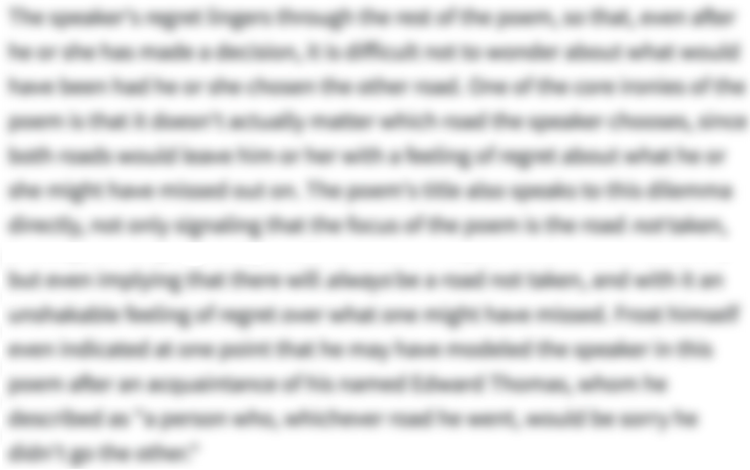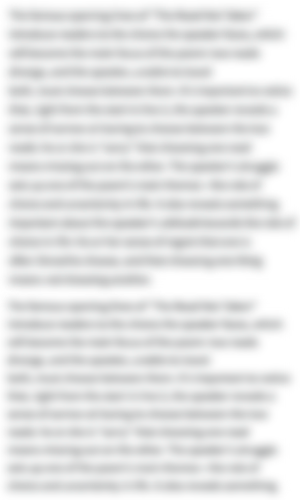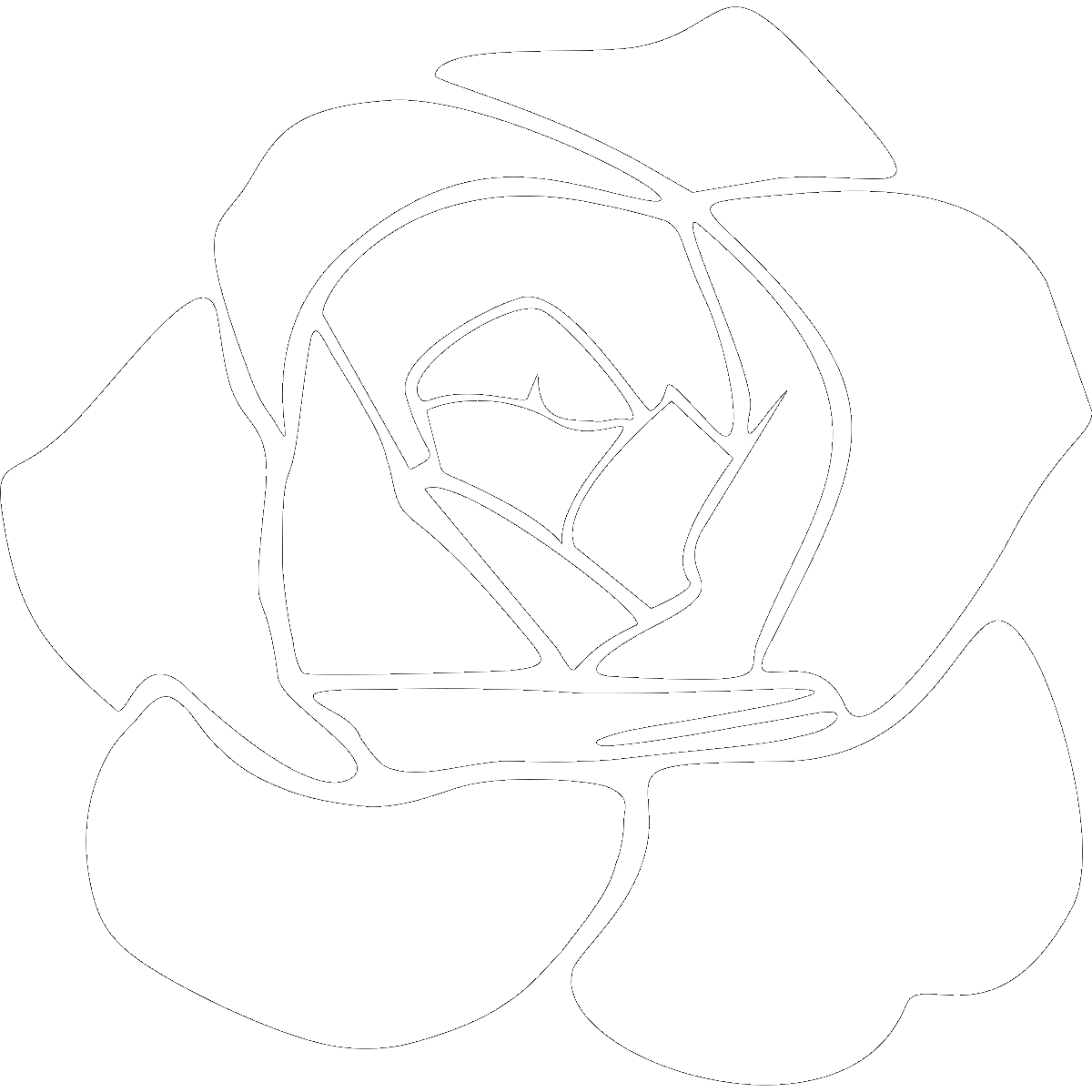The Full Text of “Women and Roses”
I
1I dream of a red-rose tree.
2And which of its roses three
3Is the dearest rose to me?
II
4Round and round, like a dance of snow
5In a dazzling drift, as its guardians, go
6Floating the women faded for ages,
7Sculptured in stone, on the poet's pages.
8Then follow women fresh and gay,
9Living and loving and loved to-day.
10Last, in the rear, flee the multitude of maidens,
11Beauties yet unborn. And all, to one cadence,
12They circle their rose on my rose tree.
III
13Dear rose, thy term is reached,
14Thy leaf hangs loose and bleached:
15Bees pass it unimpeached.
IV
16Stay then, stoop, since I cannot climb,
17You, great shapes of the antique time!
18How shall I fix you, fire you, freeze you,
19Break my heart at your feet to please you?
20Oh, to possess and be possessed!
21Hearts that beat 'neath each pallid breast!
22Once but of love, the poesy, the passion,
23Drink but once and die!—In vain, the same fashion,
24They circle their rose on my rose tree.
V
25Dear rose, thy joy's undimmed,
26Thy cup is ruby-rimmed,
27Thy cup's heart nectar-brimmed.
VI
28Deep, as drops from a statue's plinth
29The bee sucked in by the hyacinth,
30So I will bury me while burning,
31Quench like him at a plunge my yearning,
32Eyes in your eyes, lips on your lips!
33Fold me fast where the cincture slips,
34Prison all my soul in eternities of pleasure,
35Girdle me for once! But no—the old measure,
36They circle their rose on my rose tree.
VII
37Dear rose without a thorn,
38Thy bud's the babe unborn:
39First streak of a new morn.
VIII
40Wings, lend wings for the cold, the clear!
41What is far conquers what is near.
42Roses will bloom nor want beholders,
43Sprung from the dust where our flesh moulders.
44What shall arrive with the cycle's change?
45A novel grace and a beauty strange.
46I will make an Eve, be the artist that began her,
47Shaped her to his mind!—Alas! in like manner
48They circle their rose on my rose tree.
-
“Women and Roses” Introduction
-
In Victorian poet Robert Browning's "Women and Roses," a dazzled speaker recounts a strange dream. He sees before him a "red-rose tree"—a bush of red roses—around which all the beautiful women who ever were, are, or will be dance. He reaches out to every generation, past, present, and future, begging for an embrace or just a moment's contact—but the ladies, unperturbed, dance on and on, just out of his reach. This strange, dreamy poem expresses a deep longing for female beauty, but also for the ability to capture female beauty: this is a poem about both sexual and creative frustration. Browning wrote this poem as part of a New Year's poem-a-day challenge to himself in early 1852 and collected it in his important 1855 book Men and Women.
-
-
“Women and Roses” Summary
-
I have a dream of a red rosebush. Which of its three roses do I love best?
In a spinning dance, like snow whirling in a wind, the guardians of the roses circle their flowers. First come the long-dead women we only know of through art, the models for ancient sculptors and poets. Then come the fresh-faced, beautiful living women, alive and beloved even now. Last come the countless beautiful ladies who haven't been born yet. All to the same rhythm, they dance round their roses on my rosebush.
Oh, first rose: your life is over. Your petals dangle palely. Bees fly right past you.
Wait then—bend down to me, since I can't reach you, oh glorious ladies of the long-ago past! How can I capture you, fire you like a pot, freeze you in place—how can I throw myself, heartbroken, at your feet for your pleasure? Oh, if only I could possess you and be possessed by you! Oh, the hearts that once beat in your pale chests! Let me taste your love, your poetry, your passion just once—just one sip and then I'll die! But my begging is useless: in just the same way as before, these ancient women dance round their rose on my rosebush.
Oh, second rose: you're in the joyful, unfaded prime of your life. Your petals are edged in brilliant red; you overflow with sweet nectar.
As deeply as a bee buries itself in a hyacinth flower near the foot of a statue, I'll bury myself passionately in your embrace, quenching my thirst for love like the bee quenches his thirst for nectar—gazing into your eyes, kissing your lips! Hold me tightly here, where your belt begins to slip open; trap me in an eternal delight; embrace me just once! But no—in just the same way as before, these living women dance round their rose on my rosebush.
Oh, third rose: you're thornless, and your little bud stands for all the as-yet-unborn ladies, its colors like the first hint of sunrise.
Send me wings and let me cold, pure imagination take flight! The distant future overwhelms my present senses. I know that, long years from now, roses will still be blooming (and won't lack for admirers), growing right up out of the dirt where our dead bodies rot. What will come with changing time? A new, mysterious, strange, as-yet-unknown loveliness. I'll design a new woman of the future; I'll be the artist who dreamed her up, shaped her in his own imagination! But, ah, no! In just the same way as before, these unborn women dance round their rose on my rosebush.
-
-
“Women and Roses” Themes
-

The Eternal Allure of Female Beauty
Robert Browning's "Women and Roses" suggests that female beauty is both eternal and timelessly alluring. The poem's speaker describes a vivid dream in which he sees all the beautiful women who have ever lived and will ever live dancing around a red rosebush. The women of the past—ladies immortalized in sculpture and poetry—dance around a withered rose; the women of the present dance around a rose in full bloom; the women of the future dance around a tightly furled rosebud. Feminine beauty, all this rosy symbolism suggests, is as constant as the circle of life, an idea also conjured up by the image of the women's perpetual circular dancing. Sure, the women of the past are long gone, the women of the future not here yet—but that doesn't stop the passionate speaker from desiring them right alongside the women who are "living and loving and loved to-day." Wherever he looks in time, he finds female loveliness.
Where roses in poetry are more usually a symbol of transient female beauty, then, the speaker's dreamy rosebush instead suggests that it hardly matters that the roses of women's loveliness fade and die: as in nature, more roses are always coming along. For that matter, the dead ladies of the past and the unborn ladies of the future are still desirable in imagination. Both desirable women and desire itself are thus in some strange way immortal.
Unfortunately for this speaker, however, wanting isn't the same as having, and his desire for all of these dream-ladies is also perpetually frustrated. Whenever he begs them to let him embrace them—or even to hold still for a second so he can look at them—they just go on tantalizingly dancing. This, then, might be another timeless truth about desire: it gets stronger the further out of reach the archetypal lovely ladies are!
- See where this theme is active in the poem.
-

Sexual Frustration and Repression
The speaker of "Women and Roses" enjoys (or suffers, depending on how you look at it) a vivid dream: a vision of all the beautiful ladies who have ever lived or ever will live dancing around his "red-rose tree." Though this lovely rosebush itself seems to belong to the speaker, the ladies do not—and though he urgently desires them and calls out to them, they won't stop their dancing for even a second. This dream of impassive ladies and thwarted longing symbolically expresses a real-life feeling: sexual frustration. Such frustration, the poem suggests, can be both tormenting and paralyzing, trapping a person in tantalized stasis.
Watching all the ladies dance round the rose tree, the speaker finds himself longing for them in increasingly explicit sexual terms:
- The ladies of the past make him long to "possess and be possessed"—to share mutual and total adoration and pleasure, fully absorbed in each other. ("Possession" is an old metaphor for love and sex, suggesting that lovers in some way take ownership of each other or merge with each other.)
- The ladies of the present, meanwhile, send him into a feverish fantasy of plunging into an embrace as deeply as a "bee sucked in by the hyacinth"—a frankly sexual image that he intensifies further by begging that the ladies hold him tightly "where the cincture slips" (that is, where their belts come undone).
No matter how intense the speaker's desire or eloquent his pleas, though, the ladies always respond in just the same way: "they circle their rose on my rose tree," dancing calmly at a distance, out of reach. Left "burning" with unquenchable passion, the speaker seems caught in a real bind, able neither to consummate his desire for these ladies nor turn away from them.
The image of the ladies circling endlessly at a distance suggests that sexual frustration can be as paralyzing as it is tormenting. Perhaps the poem even hints at a social problem: a kind of suffering particularly acute in Browning's Victorian world, when sexuality was aggressively policed and repressed and women, in particular, were not meant to act on their desires.
- See where this theme is active in the poem.
-

Creative Struggle and Artist's Block
Dreaming of all the beautiful women who ever lived dancing around a rosebush, this poem's speaker is frustrated not just by the fact that none of these ladies will let him embrace them, but also by the fact that they won't let him capture them in another sense: he can't "freeze" them on the page in his art any more than he can "girdle" (or encircle) them in his arms. His sexual frustration thus becomes an image of another kind of frustration: a creative block. Try as an artist might to capture beauty, this poem suggests, there are times when beauty just won't let itself be captured.
The poem's speaker doesn't just feel physically stirred by the vision of all these lovely dancing ladies. He also feels inspired:
- Looking to the ladies of the past—women already made legendary in art, "sculptured in stone" or described "on the poet's pages"—he longs to join the ranks of artists who have immortalized such beauty. He wants to "fix," "fire," or "freeze" these women: in other words, to capture them, fixing them like oil paints, firing them like clay sculptures, or just generally freezing them in his art, preserving them forever.
- And soaring toward the ladies of the future on the "wings" of his imagination, he dreams that he might be the guy to "make an Eve"—to "be the artist that began" a new kind of beauty. Here, he seems to want to exercise his creative powers to play god, designing a new and lovely woman (who might be read as a symbol of a beautiful, innovative artwork) just as the biblical God created the first woman.
But though these women make the speaker long to reach new artistic heights, there's a problem: no matter what he calls out to them, they completely ignore him, "circl[ing] their rose on [his] rose tree" in an endless dance, totally unperturbed.
The speaker's dream of the dancing women thus captures what it feels like for an artist when one simply can't make the art one wants to. The speaker doesn't lack for the inspiration, passion, or desire to make art—but the execution, his dream reveals, simply isn't in his power at the moment. Such a predicament, the poem suggests, is as tormenting as sexual frustration: in both cases, there's a sense of a desired completion that's just out of reach!
- See where this theme is active in the poem.
-
-
Line-by-Line Explanation & Analysis of “Women and Roses”
-
Before Line 1, Lines 1-3, Between Lines 3-4, Lines 4-12
I
I dream of a red-rose tree.
And which of its roses three
Is the dearest rose to me?
II
Round and round, like a dance of snow
In a dazzling drift, as its guardians, go
Floating the women faded for ages,
Sculptured in stone, on the poet's pages.
Then follow women fresh and gay,
Living and loving and loved to-day.
Last, in the rear, flee the multitude of maidens,
Beauties yet unborn. And all, to one cadence,
They circle their rose on my rose tree.The speaker of "Women and Roses" introduces a dream vision in three neat lines. He dreams, he says, of a "red-rose tree," a bush that grows just three red roses. This vision, with matter-of-fact dream logic, presents him with a choice or a puzzle: which of those roses, he asks, is the "dearest" to him? Which would he pick?
This simple scenario blossoms into something more complicated in the poem's second stanza. The speaker isn't just seeing a red-rose tree. He's watching the "guardians" of its roses dancing around them:
Round and round, like a dance of snow
In a dazzling drift, as its guardians, go
Floating the women [...]These ethereal, fairy-like guardians, it transpires, are the women of the past, the present, and the future:
- First come women long dead—beauties immortalized "in stone" or "on the poet's pages." "Faded for ages," these women nonetheless have a lasting power. Think Helen of Troy, Cleopatra, and whoever modeled for the Venus de Milo: women whose legendary loveliness has considerably outlived their mortal bodies.
- Next come the women who are "living and loving and loved to-day"—the women of the present, "fresh and gay," lively and beautiful.
- Finally come the "multitude of maidens" who are "yet unborn," "beauties" who haven't even appeared on the planet yet.
The poem is deep in dreamland, here. Try to envision all those ladies dancing around a single rosebush and you'll end up with something as dizzyingly infinite as Dore's Dante or Blake's Jacob: already, this strange vision is laden with impossibilities and symbolic depths.
The poem's very title, "Women and Roses," might summon up all the countless works of art that relate ladies to flowers. Gorgeous, scented, thorny, and short-lived, roses are a common image of the delights, dangers, and tragedies of love and female beauty.
Here, though, the impossible multitudes of maidens doing their endless, circling dance suggest something a little unusual. Rather than sadly gesturing to the impermanence of love and beauty—roses, famously, fade—this rose tree and the circle-dance around it seems to suggest that love and beauty are perpetual. The lovely ladies of the past are still here, immortalized in art; the ladies of the present are, well, present; the ladies of the future are endlessly multitudinous. And all of them go "round and round" in a ceaseless circle that suggests infinity.
The speaker, then, is dreaming of a glorious rosy abundance of female loveliness, an embarrassment of riches. Notice, too, that all these ladies are circling his rose tree: they seem, in some way, to have come for him. But as the reader and the speaker alike will soon find, this won't be a dream of abundant romantic gratification. The circling ladies will frustrate this speaker's desires in more ways than one.
-
Lines 13-15
Dear rose, thy term is reached,
Thy leaf hangs loose and bleached:
Bees pass it unimpeached.

Unlock all 265 words of this analysis of Lines 13-15 of “Women and Roses,” and get the Line-by-Line Analysis for every poem we cover.
Plus so much more...
Get LitCharts A+ -
Lines 16-19
Stay then, stoop, since I cannot climb,
You, great shapes of the antique time!
How shall I fix you, fire you, freeze you,
Break my heart at your feet to please you? -
Lines 20-24
Oh, to possess and be possessed!
Hearts that beat 'neath each pallid breast!
Once but of love, the poesy, the passion,
Drink but once and die!—In vain, the same fashion,
They circle their rose on my rose tree. -
Lines 25-27
Dear rose, thy joy's undimmed,
Thy cup is ruby-rimmed,
Thy cup's heart nectar-brimmed. -
Lines 28-36
Deep, as drops from a statue's plinth
The bee sucked in by the hyacinth,
So I will bury me while burning,
Quench like him at a plunge my yearning,
Eyes in your eyes, lips on your lips!
Fold me fast where the cincture slips,
Prison all my soul in eternities of pleasure,
Girdle me for once! But no—the old measure,
They circle their rose on my rose tree. -
Between Lines 36-37, Lines 37-39, Between Lines 39-40, Lines 40-43
VII
Dear rose without a thorn,
Thy bud's the babe unborn:
First streak of a new morn.
VIII
Wings, lend wings for the cold, the clear!
What is far conquers what is near.
Roses will bloom nor want beholders,
Sprung from the dust where our flesh moulders. -
Lines 44-48
What shall arrive with the cycle's change?
A novel grace and a beauty strange.
I will make an Eve, be the artist that began her,
Shaped her to his mind!—Alas! in like manner
They circle their rose on my rose tree.
-
-
“Women and Roses” Symbols
-

The Roses
The three roses on the speaker's rose tree symbolize the beautiful ladies of the past, the present, and the future. The speaker's dream isn't subtle about this symbolism: each of the roses is guarded by those very ladies.
- The women of the past dance around a withered, fading rose;
- The women of the present around a blooming rose;
- And the women of the future around a new bud.
Roses are a traditional symbol for love and female beauty. But by connecting these roses to time and mortality, this poem does something innovative with that symbolism. Rather than lamenting that the roses of women's beauty fade all too fast (as, for instance, Duke Orsino famously and ungallantly does in Twelfth Night), this speaker seems just as excited about the withered-rose ladies and the bud-rose ladies as he is about the ladies who are "living and loving and loved to-day": in his eyes, it's downright great that the past was as full of lovely women as the present, and that the future will be full of lovely women, too. It would be better if any of them would give him the time of day, of course, but nevertheless, this dream of roses speaks of perpetual beauties, not dying ones.
- See where this symbol appears in the poem.
-
-
“Women and Roses” Poetic Devices & Figurative Language
-
Imagery
This poem's sensuous imagery makes the speaker's vision feel as intense, compelling, and strange as a real dream.
Take, for instance, his vision of the ladies endlessly circling single roses on his "red-rose tree." As they whirl round those roses "like a dance of snow," they seem small and light as fairies. Just a few lines later, though, the ladies of the past have suddenly become titans, "great shapes" so big that the speaker has to beg them to "stoop" to listen to him. This shifty scale captures the matter-of-fact Alice-in-Wonderland flexibility of dreams, and symbolically gets at the speaker's frustrations, to boot: either these ladies are too small and ephemeral or too big and grand, but either way, they're out of his grasp.
There's a similar dream-logic in the moments when the speaker addresses the ladies' roses, one by one. These visions always take up a single neat tercet, and their intense imagery seems to fill up the speaker's whole field of vision for a minute: he becomes utterly absorbed in the petals hanging "loose and bleached" from the rose of the past, the "ruby-rimmed" heart of the rose of the present, and the sunrise colors of the rose of the future, like the "first streak of a new morn." These focused moments open new acts in a dream-drama, again drawing attention to the obvious symbolism of these roses' different phases of life.
The poem's most heated imagery comes in the speaker's address to the ladies of the present, whom he begs for passionate embraces in vivid physical terms. He's "burning" with desire, he tells them, and desperately needs to "plunge" into their arms—or something of theirs, anyway. His images of being held and contained—"bur[ied]" like a bee in a flower, "girdle[d]" (or encircled) as if by a belt—make this passage frankly sexual. As the ladies' changing scale suggests their inaccessibility, this passage of burning and enveloping shows just how tantalized and frustrated the speaker feels. This is a dream of desire burning all the hotter because it can't (at least at present) be fulfilled.
- See where this poetic device appears in the poem.
-
Repetition


Unlock all 386 words of this analysis of Repetition in “Women and Roses,” and get the poetic device analyses for every poem we cover.
Plus so much more...
Get LitCharts A+ -
Simile
-
Alliteration
-
Metaphor
-
-
“Women and Roses” Vocabulary
Select any word below to get its definition in the context of the poem. The words are listed in the order in which they appear in the poem.
- Red-rose tree
- Gay
- Cadence
- Leaf
- Unimpeached
- Stoop
- The antique time
- Fix
- Fire
- Pallid
- The same fashion
- Plinth
- Cincture
- Girdle
- The old measure
- Want
- Moulders
- In like manner
Red-rose tree-
That is, a bush that grows red roses.
- See where this vocabulary word appears in the poem.
-
Form, Meter, & Rhyme Scheme of “Women and Roses”
-
Form
The 48 lines of "Women and Roses" are divided into two different stanza shapes: little tercets (or three-line stanzas) alternate with nine-line stanzas.
- In the tercets, the speaker introduces symbolic roses, from the withered rose of the past to the furled bud of the future.
- In the nine-line stanzas, he passionately cries out to the women associated with those roses, begging them to embrace him, possess him, or at the very least stand still for just a moment and let him get a good look at them. But as the poem's refrain says, the ladies never stop for a moment: "They circle their rose on my rose tree," doing their ceaseless dance without a glance at the speaker.
The pulsing variation of the stanzas evokes the movement of the speaker's dream. In those tercets, it's as if the speaker's whole vision is taken up with one symbolic blossom; in the nine-line stanzas, he's swept away by emotion and desire.
-
Meter
"Women and Roses" is written in a ragged, unpredictable accentual meter—that is, a meter that uses a regular number of strong beats without sticking to any one kind of metrical foot (like the trochee or the dactyl). In its tercets, each line (usually) uses three strong beats, as in line 2:
And which of its roses three
And the nine-line stanzas start out in four-beat lines, as in line 40:
Wings, lend wings for the cold, the clear!
But those longer stanzas always close with a five-beat line rolling into the three-beat refrain, as in lines 35-36:
Girdle me for once! But no—the old measure,
They circle their rose on my rose tree.There's a pattern here, then—but unpredictable rhythms make the nine-line stanzas feel like a bit of a free-for-all. The five-beat lines toward the end of each stanza, in particular, feel scrabbly and stumbly—fitting for the frustrating moment when the speaker realizes that these ladies aren't going to respond to his pleas, but will keep on circling their roses, just as before.
-
Rhyme Scheme
There are two different rhyme schemes in "Women and Roses," one for the tercets and one for the nine-line stanzas. The tercets, neatly enough, use triplets—that is, three rhymes in a row:
AAA
These focused rhymes help to suggest that each of these rosy visions captures the speaker's full attention: every time his dream presents him with a new rose, it absorbs him totally for a moment before he gets swept up in his longing for the ladies it symbolizes.
The nine-line stanzas, meanwhile, use couplets—right up until the poem's refrain:
BBCCDDEEF
The tight couplets capture the speaker's urgent, energetic desire as he reaches out to the dancing ladies. But that closing F rhyme always comes along to shut down his hopes. No matter what, the refrain insists, the ladies go on dancing around their roses.
-
-
“Women and Roses” Speaker
-
The poem's speaker is a dreamer. Perhaps asleep and dreaming, perhaps awake and daydreaming, he's arrested by a vision of all the beautiful ladies who were, are, and ever will be dancing endlessly around a rose bush. Though he begs each generation in turn to let him steal a kiss—or at least to hold still for a second and let him fall adoringly at their feet—not one lady listens to him; they dance on, and he can only gaze in longing.
The speaker's desire to both embrace and capture the ladies of his dream suggests that this is a dream of not just sexual but also artistic frustration. The ladies of the past, for instance, are those whom past poets and sculptors have immortalized; his longing to "fix," "fire," or "freeze" them hints that he, too, wants to capture female beauty so perfectly that some other poor guy will long for his creation as he longs for these. Similarly, his desire for ladies of the future is a creative desire: he wants to "make an Eve," to design a totally new kind of beauty.
His desire for the women of the present, meanwhile, is more purely and heatedly sexual, all lips on lips and "eternities of pleasure." But of course, sexuality is creative, too—and this speaker's frustrated passion suggests that sexual and artistic desire have a lot in common with each other.
-
-
“Women and Roses” Setting
-
The poem is set in the speaker's dream: a vision of a pointedly symbolic rose bush. The lovely ladies of the past, present, and future each guard a rose on this bush, dancing around it in a ceaseless circle. Each rose is fitted to the women's position in time: the ladies of the past dance around a faded rose that drops its petals, the ladies of the present around a rose in full bloom, and the ladies of the future around a bright little bud.
Surreally, the poem's scale seems to swell and shrink. One moment, the ladies are small as fairies, dancing around an individual flower like snowflakes in a gust; the next, they're monumental giants who must "stoop" to address the speaker. This rose tree stands in a dream-world, then, and the speaker's vision is shaped by his feelings. Like Alice, the speaker often seems confounded by all these problems of scale; whether the ladies are tiny and ungraspable or huge and distant, they're always out of his reach, never responding to his desperate longing to "possess and be possessed" by them.
-
-
Literary and Historical Context of “Women and Roses”
Literary Context
The English poet Robert Browning (1812-1889) was most famous in his time for not sounding much like a poet. His contemporaries were confused by his most distinctive works: his dramatic monologues, in which he inhabited a character like an actor playing a part. Even Oscar Wilde, a big Browning fan, famously said that "[George] Meredith is a prose Browning, and so is Browning." The Victorian literary world was much more at ease with the melancholy lyricism of Tennyson or the elegance of Elizabeth Barrett Browning (Browning's wife, and a much more famous poet at the time) than with the novelistic storytelling of Browning's work.
But it's on his earthy, vibrant dramatic monologues that Browning's enduring reputation rests. His best-known poems form a veritable rogues' gallery, with narrators from a corrupt bishop to a murderous Italian duke to an equally murderous lover. By allowing these hideous men to speak for themselves, Browning explored the darker corners of human nature—and took a particular interest in the ways that people justify their terrible deeds. Villains, Browning's monologues suggest, don't tend to think that they're villains. Browning's poetry wasn't all theatrical murder and greed, though; he also wrote tenderly about heroism, homesickness, and heartbreak.
"Women and Roses" belongs more to this latter mode—though it's also rather a strange poem for Browning, its dreamy, visionary quality unlike his characteristic robust narrative style. Perhaps that's partly because he wrote it under pressure! Browning composed this poem as part of a New Year's resolution in early 1852, when—annoyed that he hadn't been writing as much as he felt he should lately—he swore to write a new poem every day. Though he only kept it up for a fortnight, that fortnight produced some of his most famous verses, from "Love Among the Ruins" to "Childe Roland to the Dark Tower Came." These and many other Browning hits would appear in his 1855 collection Men and Women.
Historical Context
This speaker's passionate voice might contain an echo of Browning's own passions (and his creative frustration—he wrote this poem as part of a poem-a-day project to break a dry spell!).
In 1845, Browning paid his first visit to a rising star in the literary world: Elizabeth Barrett. Unusually for a woman writer of the time, Barrett had become wildly famous; Browning was only one of many readers to be moved by her soulful, elegant poetry. He wrote her a fan letter, and the two began a warm correspondence. Eventually, they fell deeply in love.
Barrett's tyrannical father was having none of it, however. Besides preferring to keep his talented daughter (and her earnings) to himself, he disapproved of Browning, who was several years younger than Barrett—unconventional in a Victorian marriage—and not yet a commercially successful writer himself. Defying Mr. Barrett, the couple eloped to Italy in 1846 (which they might have rather enjoyed, following as they were in the romantic footsteps of their heroes Mary and Percy Shelley). Outraged, Elizabeth's father disinherited her. The newlywed Brownings, undaunted, set up house in Florence. There, they would live happily for over a decade until Elizabeth fell ill. She died in Robert's arms at the age of 55.
-
More “Women and Roses” Resources
-
External Resources
-
Browning's Legacy — Read an article commemorating Browning's 200th birthday.
-
More on Browning — Find a wealth of resources on Browning at the Victorian Web.
-
A Brief Biography — Learn more about Browning's life and work via the Poetry Foundation.
-
Portraits of Browning — Take a look at the National Portrait Gallery's collection of Browning portraiture—including a touching bronze cast of his hand holding his wife Elizabeth's.
-
Men and Women — Take a peek at an early edition of Men and Women, the important collection in which this poem first appeared.
-
-
LitCharts on Other Poems by Robert Browning
-








